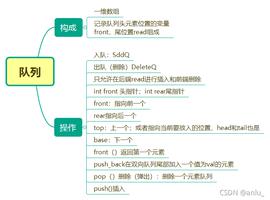redis5.0.7源码阅读——动态字符串sds

redis中动态字符串sds相关的文件为:sds.h与sds.c
一、数据结构
redis中定义了自己的数据类型"sds",用于描述 char*,与一些数据结构
1 typedef char *sds; 23/* Note: sdshdr5 is never used, we just access the flags byte directly.
4 * However is here to document the layout of type 5 SDS strings. */
5struct __attribute__ ((__packed__)) sdshdr5 {
6 unsigned char flags; /* 3 lsb of type, and 5 msb of string length */
7char buf[];
8};
9struct __attribute__ ((__packed__)) sdshdr8 {
10 uint8_t len; /* used */
11 uint8_t alloc; /* excluding the header and null terminator */
12 unsigned char flags; /* 3 lsb of type, 5 unused bits */
13char buf[];
14};
15struct __attribute__ ((__packed__)) sdshdr16 {
16 uint16_t len; /* used */
17 uint16_t alloc; /* excluding the header and null terminator */
18 unsigned char flags; /* 3 lsb of type, 5 unused bits */
19char buf[];
20};
21struct __attribute__ ((__packed__)) sdshdr32 {
22 uint32_t len; /* used */
23 uint32_t alloc; /* excluding the header and null terminator */
24 unsigned char flags; /* 3 lsb of type, 5 unused bits */
25char buf[];
26};
27struct __attribute__ ((__packed__)) sdshdr64 {
28 uint64_t len; /* used */
29 uint64_t alloc; /* excluding the header and null terminator */
30 unsigned char flags; /* 3 lsb of type, 5 unused bits */
31char buf[];
32 };
定义结构体时,加上了 __attribute__ ((__packed__)) 关键字,用于取消字节对齐,使其按照紧凑排列的方式,占用内存。这样做的目的并不仅仅只是为了节约内存的使用。结构体最后有一个 char buf[],查了资料之后了解到,其只是定义一个数组符号,并没有任何成员,不占用结构体的内存空间,其真实地址紧随结构体之后,可实现变长结构体。由此可以只根据sds字符串的真实地址,取到sds结构体的任意成员变量数据。如flags:
1void func(const sds s)2{3 unsigned char flags = s[-1]; 4 }
这个flags,从源码的注释上看,其低三位用于表示sds类型,高五位是当sds类型为sdshdr5时,表明字符串长度的。对于非sdshdr5的类型,有专门的成员变量描述当前已使用的长度,及总buffer长度。
sds类型:
1#define SDS_TYPE_5 02#define SDS_TYPE_8 1
3#define SDS_TYPE_16 2
4#define SDS_TYPE_32 3
5#define SDS_TYPE_64 4
sds定义了两个宏,用于获取sds结构体首地址:
1#define SDS_HDR_VAR(T,s) struct sdshdr##T *sh = (void*)((s)-(sizeof(struct sdshdr##T)));2#define SDS_HDR(T,s) ((struct sdshdr##T *)((s)-(sizeof(struct sdshdr##T))))
由此可见sds结构体的大致结构为:
1/*2sdshdr5
3+--------+----...---+
4|00011000|abc |
5+--------+----...---+
6|flags |buf
7
8sdshdr8
9+--------+--------+--------+----...---+
10|00000011|00000011|00000001|abc |
11+--------+--------+--------+----...---+
12|len |alloc |flags |buf
13*/
sds的一些常规操作,如获取字符串长度、获取剩余buf长度等,都是其于以上操作,首先根据sds字符串地址获取其flags的值,根据flags低三位判断sds类型,接着使用宏SDS_HDR_VAR或SDS_HDR进行操作。如:
1#define SDS_TYPE_MASK 7 //0000,01112
3static inline size_t sdslen(const sds s) {
4//获取flags
5 unsigned char flags = s[-1];
6//根据flags低三位取类型,根据类型做不同处理
7switch(flags&SDS_TYPE_MASK) {
8case SDS_TYPE_5:
9return SDS_TYPE_5_LEN(flags);
10case SDS_TYPE_8:
11return SDS_HDR(8,s)->len;
12case SDS_TYPE_16:
13return SDS_HDR(16,s)->len;
14case SDS_TYPE_32:
15return SDS_HDR(32,s)->len;
16case SDS_TYPE_64:
17return SDS_HDR(64,s)->len;
18 }
19return0;
20 }
关于sds结构体中的len与alloc,len表示的是sds字符串的当前长度,alloc表示的是buf的总长度。
二、一些操作。
首先是一个根据字符串长度来决定sds类型的方法
1static inline char sdsReqType(size_t string_size) { 2if (string_size < 1<<5) //flags高五位最大数字为 1<<5 - 13return SDS_TYPE_5;
4if (string_size < 1<<8) //uint8_t 最大数字为 1<<8 - 1
5return SDS_TYPE_8;
6if (string_size < 1<<16) //uint16_t 最大数字为 1<<16 - 1
7return SDS_TYPE_16;
8#if (LONG_MAX == LLONG_MAX) //区分32位/64位系统
9if (string_size < 1ll<<32)
10return SDS_TYPE_32;
11return SDS_TYPE_64;
12#else
13return SDS_TYPE_32;
14#endif
15 }
创建一个新的sds结构体:
1 sds sdsnewlen(constvoid *init, size_t initlen) { 2void *sh; 3 sds s; 4char type = sdsReqType(initlen); 5if (type == SDS_TYPE_5 && initlen == 0) type = SDS_TYPE_8; 6int hdrlen = sdsHdrSize(type); 7 unsigned char *fp; /* flags pointer. */8
9 sh = s_malloc(hdrlen+initlen+1);
10if (init==SDS_NOINIT)
11 init = NULL;
12elseif (!init)
13 memset(sh, 0, hdrlen+initlen+1);
14if (sh == NULL) return NULL;
15 s = (char*)sh+hdrlen;
16 fp = ((unsigned char*)s)-1;
17switch(type) {
18case SDS_TYPE_5: {
19 *fp = type | (initlen << SDS_TYPE_BITS);
20break;
21 }
22case SDS_TYPE_8: {
23 SDS_HDR_VAR(8,s);
24 sh->len = initlen;
25 sh->alloc = initlen;
26 *fp = type;
27break;
28 }
29case SDS_TYPE_16: {
30//同SDS_TYPE_8,略
31 }
32case SDS_TYPE_32: {
33//同SDS_TYPE_8,略
34 }
35case SDS_TYPE_64: {
36//同SDS_TYPE_8,略
37 }
38 }
39if (initlen && init)
40 memcpy(s, init, initlen);
41 s[initlen] = "";
42return s;
43 }
由外部指定初始字符串与初始长度。先根据长度获取sds类型,然后根据不同类型,可以获得实际需要的总内存空间大小(包括sds结构体长度)。值得注意的是,如果初始长度为0的情况下,若为SDS_TYPE_5,则会被强制转为SDS_TYPE_8。根据源码的注释,空串的定义,通常是为了向后追加内容。SDS_TYPE_5并不适合这种场景。分配完内存空间之后,设置好sds结构体的值,再把初始字符串拷至sds字符串的实际初始位置上(如果有),就可以了。
本方法做为最底层的sds字符串初始化接口,被其它接口所调用,如:
1//空string2 sds sdsempty(void) {
3return sdsnewlen("",0);
4}
5
6//指定string
7 sds sdsnew(constchar *init) {
8 size_t initlen = (init == NULL) ? 0 : strlen(init);
9return sdsnewlen(init, initlen);
10}
11
12//从现有sds string拷贝
13 sds sdsdup(const sds s) {
14return sdsnewlen(s, sdslen(s));
15 }
sds的释放也不是简单地free sds字符串,同样,它要先找到sds结构体的首地址,再进行free:
1void sdsfree(sds s) {2if (s == NULL) return;3 s_free((char*)s-sdsHdrSize(s[-1]));4 }
做为一个变长字符串,与传统c字符串,最大的区别,是可以动态扩展,就像c++ stl里的变长数组 vector一样。sds的扩容有自己的机制:
1sds sdsMakeRoomFor(sds s, size_t addlen) { 2void *sh, *newsh; 3 size_t avail = sdsavail(s); 4 size_t len, newlen; 5char type, oldtype = s[-1] & SDS_TYPE_MASK; 6int hdrlen; 78/* Return ASAP if there is enough space left. */
9if (avail >= addlen) return s;
10
11 len = sdslen(s);
12 sh = (char*)s-sdsHdrSize(oldtype);
13 newlen = (len+addlen);
14if (newlen < SDS_MAX_PREALLOC)
15 newlen *= 2;
16else
17 newlen += SDS_MAX_PREALLOC;
18
19 type = sdsReqType(newlen);
20
21/* Don"t use type 5: the user is appending to the string and type 5 is
22 * not able to remember empty space, so sdsMakeRoomFor() must be called
23 * at every appending operation. */
24if (type == SDS_TYPE_5) type = SDS_TYPE_8;
25
26 hdrlen = sdsHdrSize(type);
27if (oldtype==type) {
28 newsh = s_realloc(sh, hdrlen+newlen+1);
29if (newsh == NULL) return NULL;
30 s = (char*)newsh+hdrlen;
31 } else {
32/* Since the header size changes, need to move the string forward,
33 * and can"t use realloc */
34 newsh = s_malloc(hdrlen+newlen+1);
35if (newsh == NULL) return NULL;
36 memcpy((char*)newsh+hdrlen, s, len+1);
37 s_free(sh);
38 s = (char*)newsh+hdrlen;
39 s[-1] = type;
40 sdssetlen(s, len);
41 }
42 sdssetalloc(s, newlen);
43return s;
44 }
本方法用于扩容sds,并可以指定长度。首先其先取出了当前还空闲的buf长度,方法如下:
1static inline size_t sdsavail(const sds s) { 2 unsigned char flags = s[-1]; 3switch(flags&SDS_TYPE_MASK) { 4case SDS_TYPE_5: { 5return0; 6 } 7case SDS_TYPE_8: { 8 SDS_HDR_VAR(8,s); 9return sh->alloc - sh->len;10 }11case SDS_TYPE_16: {12 SDS_HDR_VAR(16,s);13return sh->alloc - sh->len;14 }15case SDS_TYPE_32: {16 SDS_HDR_VAR(32,s);17return sh->alloc - sh->len;18 }19case SDS_TYPE_64: {20 SDS_HDR_VAR(64,s);21return sh->alloc - sh->len;22 }23 }24return0;25 }
若当前空闲的长度,比需要的长度大,则认为不用再额外分配空间,直接return。否则就启用扩容操作。
扩容时,先根据当前已使用的长度len与需要增加的长度addlen,算出一个初始新长度newlen,然后对其进行判断,若newlen大于1M,则在newlen的基础上,继续增加1M,否则直接翻倍。然后再根据newlen的最终大小,获取sds的新类型。此时,若类型依然为SDS_TYPE_5,也要强行修正为SDS_TYPE_8。因为SDS_TYPE_5类型并不知道当前空闲空间的大小。此时,若sds的新类型与原来相同,则只需要调用realloc重新分配一下空间即可。此方法会分配出一块新空间的同时,把原来空间的内容拷过去,并释放原有空间。而sds类型发生改变的时候,就需要手动新造一个新的sds了。扩容完成之后,需要修正一下当前已使用的空间len,与总buf大小 alloc。
扩容完成之后,或者是其它什么操作,如人工修改了sds字符串,并更新的len的情况下,会存在空闲空间太大的情况。此时如果想释放这部分空间,sds也提供了相应的操作:
1sds sdsRemoveFreeSpace(sds s) { 2void *sh, *newsh; 3char type, oldtype = s[-1] & SDS_TYPE_MASK; 4int hdrlen, oldhdrlen = sdsHdrSize(oldtype); 5 size_t len = sdslen(s); 6 size_t avail = sdsavail(s); 7 sh = (char*)s-oldhdrlen; 89/* Return ASAP if there is no space left. */
10if (avail == 0) return s;
11
12/* Check what would be the minimum SDS header that is just good enough to
13 * fit this string. */
14 type = sdsReqType(len);
15 hdrlen = sdsHdrSize(type);
16
17/* If the type is the same, or at least a large enough type is still
18 * required, we just realloc(), letting the allocator to do the copy
19 * only if really needed. Otherwise if the change is huge, we manually
20 * reallocate the string to use the different header type. */
21if (oldtype==type || type > SDS_TYPE_8) {
22 newsh = s_realloc(sh, oldhdrlen+len+1);
23if (newsh == NULL) return NULL;
24 s = (char*)newsh+oldhdrlen;
25 } else {
26 newsh = s_malloc(hdrlen+len+1);
27if (newsh == NULL) return NULL;
28 memcpy((char*)newsh+hdrlen, s, len+1);
29 s_free(sh);
30 s = (char*)newsh+hdrlen;
31 s[-1] = type;
32 sdssetlen(s, len);
33 }
34 sdssetalloc(s, len);
35return s;
36 }
操作与扩容类似,同样是会根据sds类型是否发生变化 ,来决定是使用realloc还是重新造一个sds。
除此之外,sds还实现了一些转义、数据类型转换、一些类似c风格的字符串操作等。如:strcpy、strcat、strlen、strcmp等。只是其更加多样化,如sds的strcat实现,就可以支持类似printf的方式。如:
1/* Like sdscatprintf() but gets va_list instead of being variadic. */2 sds sdscatvprintf(sds s, constchar *fmt, va_list ap) {
3 va_list cpy;
4char staticbuf[1024], *buf = staticbuf, *t;
5 size_t buflen = strlen(fmt)*2;
6
7/* We try to start using a static buffer for speed.
8 * If not possible we revert to heap allocation. */
9if (buflen > sizeof(staticbuf)) {
10 buf = s_malloc(buflen);
11if (buf == NULL) return NULL;
12 } else {
13 buflen = sizeof(staticbuf);
14 }
15
16/* Try with buffers two times bigger every time we fail to
17 * fit the string in the current buffer size. */
18while(1) {
19 buf[buflen-2] = "";
20 va_copy(cpy,ap);
21 vsnprintf(buf, buflen, fmt, cpy);
22 va_end(cpy);
23if (buf[buflen-2] != "") {
24if (buf != staticbuf) s_free(buf);
25 buflen *= 2;
26 buf = s_malloc(buflen);
27if (buf == NULL) return NULL;
28continue;
29 }
30break;
31 }
32
33/* Finally concat the obtained string to the SDS string and return it. */
34 t = sdscat(s, buf);
35if (buf != staticbuf) s_free(buf);
36return t;
37}
38
39/* Append to the sds string "s" a string obtained using printf-alike format
40 * specifier.
41 *
42 * After the call, the modified sds string is no longer valid and all the
43 * references must be substituted with the new pointer returned by the call.
44 *
45 * Example:
46 *
47 * s = sdsnew("Sum is: ");
48 * s = sdscatprintf(s,"%d+%d = %d",a,b,a+b).
49 *
50 * Often you need to create a string from scratch with the printf-alike
51 * format. When this is the need, just use sdsempty() as the target string:
52 *
53 * s = sdscatprintf(sdsempty(), "... your format ...", args);
54*/
55 sds sdscatprintf(sds s, constchar *fmt, ...) {
56 va_list ap;
57char *t;
58 va_start(ap, fmt);
59 t = sdscatvprintf(s,fmt,ap);
60 va_end(ap);
61return t;
62 }
其它方法在此不再过多描述
三、sds相比c的标准库优势:
1、相比于c标准库,获取字符串的len复杂读从O(N)降低到O(1),sds结构中存储了字符串的长度,所以类似strlen(str)的操作不会成为redis的性能瓶颈。
2、在内存分配策略上,redis总是会尝试多分配一些空间,比如小于1MB的字符串,总是分配2倍内存空间,对于大于1MB的空间追加1MB冗余空间,这对于字符串操作(如strcat等)能减少重新内存分配的几率,提升运行性能。
3、SDS总是安全的,sds总是会自动追加字符串结尾符号’’,有效防止溢出发生。
4、惰性释放内存,改变原字符串时,标准库需要重新分配内存的复杂度为O(N),SDS最大为O(N),最优情况下无需重新分配内存空间。
redis 5.0.7 下载链接
http://download.redis.io/releases/redis-5.0.7.tar.gz
源码阅读顺序参考:
https://github.com/huangz1990/blog/blob/master/diary/2014/how-to-read-redis-source-code.rst
其它参考资料:
https://blog.csdn.net/zzuchengming/article/details/51840067
https://blog.csdn.net/junlon2006/article/details/101369299
以上是 redis5.0.7源码阅读——动态字符串sds 的全部内容, 来源链接: utcz.com/z/532069.html







